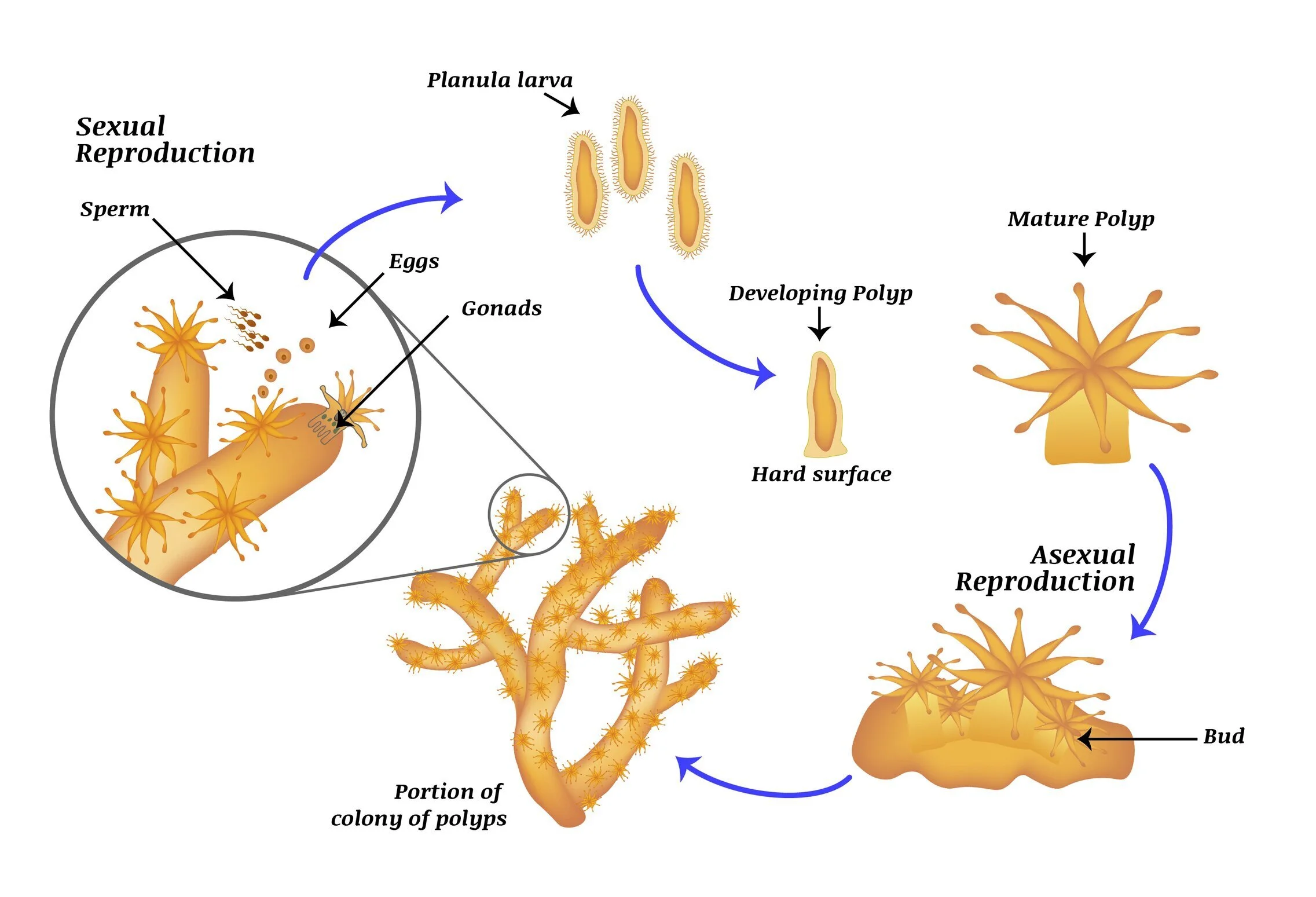What is Coral?
Corals are animals that fall under the phylum Cnidaria and the class Anthozoa. They are relatives of jellyfish and anemones. Corals can ex- ist as individual polyps, or in colonies and communities that contain hundreds to hundreds of thousands of polyps. For example, brain corals consist of colonies of many individual polyps; each individual polyp av-erages 1-3 mm in diameter. Corals can be divided into two groups: hardcoral and soft coral. Hard corals, also known as stony coral, produce a rigid skeleton made of calcium carbonate (CaCO3) in crystal form called aragonite, with reef-building capabilities. Alternatively, soft corals, including sea fans, do not produce a rigid calcium carbonate skeleton and do not form reefs, though they may be present in a reef ecosystem.
Coral Polyp: The individual coral polyp. Together with other interconnected polyps the coral becomes a colony.
How Do Corals Feed?
Most reef-building corals have a mutually beneficial relationship with a microscopic unicellular algae called zooxanthellae that lives within the cells of the coral’s gastrodermis. As much as 90% of the organic material the algae manufacture photosynthetically is transferred to thehost coral tissue. In addition to the symbiotic relationship with algae, most corals capture and consume live prey ranging from microscopic zooplankton to small fish, depending on coral size. Using its tentacles that extend outside it body, the coral uses its nematocysts, or stinging cells, to stun and kill its prey before passing it to its mouth. Once the food has been digested, the waste is expelled from the same opening.
How Do Corals Reproduce?
Corals are unique in that they are capable of reproducing both sexually and asexually. About three-quarters of
all corals are hermaphrodite; the remainder have separate male and female colonies. Sexual reproduction can
be performed in two ways: broadcast spawning (external fertilization) or brooding (internal fertilization). Broadcast
spawning consists of both male and female coral expelling massive amounts of gametes (eggs and sperm) into the water column during synchronized events. Brooding is similar to broadcast spawning, except only the malengametes are released into the water col- umn. Coral sperm is negatively buoyant once released and hopefully will be carried by ocean currents to female coral where they will fertilize the egg cells of the female coral.
Coral Life Cycle: Coral’s sexually produced larvae develop into a polp, which then multiplies itself asexually forming a colony.
Learn more about coral health and bleaching or join our one-day CoralWatch Survey course.


